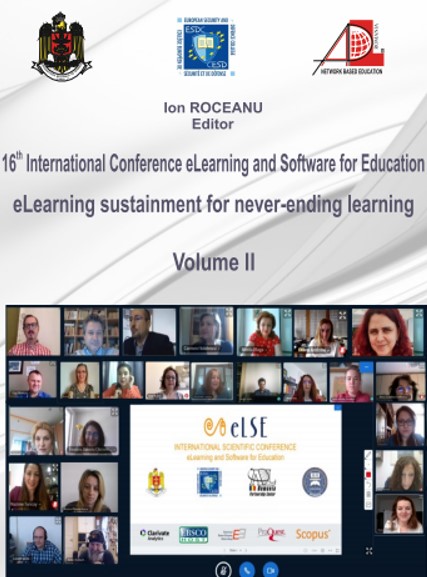WHY DIGITAL TECHNOLOGIES BOOST CREATIVITY
WHY DIGITAL TECHNOLOGIES BOOST CREATIVITY
Author(s): Augustin Semenescu, Vincentiu Daniel Antonescu, Ionut Cosmin ChivaSubject(s): Educational Psychology, ICT Information and Communications Technologies, Distance learning / e-learning, Pedagogy
Published by: Carol I National Defence University Publishing House
Keywords: Implementation; Innovation; Educational technology; Creativity;
Summary/Abstract: The use of digital technologies in education has been advocated by many researchers (Aldrich, 2004; Quinn, 2005). These as well as the Higher Education Institutions' Educators strongly encourage the adoption of information technology for teaching and learning. Educators continually improve their practice by learning from and with others and exploring proven and promising practices that leverage technology to improve student learning. Educators are using the technology to create, adapt and personalize learning experiences that foster independent learning and accommodate learner differences and needs. This article presents a variety of ways in which digital technology can enhance innovation by facilitating the necessary conditions for the development of students' creative ideas and the implementation of these ideas in current activities. According to Kampylis and Berki (2014, p. 6): 'Creative thinking is defined as the thinking that enables students to apply their imagination to generating ideas, questions and hypotheses, experimenting with alternatives and to evaluating their own and their peers' ideas, final products and processes'. Creativity is an active process necessarily involved in innovation. It is a learning habit that requires skills as well as specific understanding of the contexts in which creativity is being applied. The creative process is at the heart of innovation. We describe - in the first part- conditions necessary to generate and implement creative ideas. Also, we examine - in the second part - how digital technology influences each of these conditions, , the most memorable way to get people into an innovation. The paper is based on a literature survey and author research
Journal: Conference proceedings of »eLearning and Software for Education« (eLSE)
- Issue Year: 16/2020
- Issue No: 02
- Page Range: 642-649
- Page Count: 8
- Language: English

